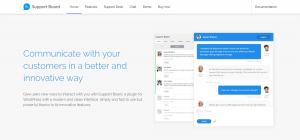Avoid internal competition and inflated CPCs by managing three key aspects of your PPC campaigns
The more campaigns you run in a platform like Google Ads, the more likely you are to have campaigns competing against each other for the same keywords. Without careful campaign management, this can drive up the cost of your CPCs and hurt the performance of your PPC strategy.
Today, we look at how you can identify campaigns that are competing with each other and how to manage them to avoid any conflicts.
Are your campaigns competing against each other?
Some businesses promote a range of similar products or services at the campaign level, which can lead to internal competition. For example, a travel company may promote campsites around the country or a training company may advertise courses at various locations.
In this instance, a travel company may target many of the same keywords on platforms like Google Ads and Microsoft Ads (Bing Ads).
The danger is that your campaigns for different locations could end up competing against each other for these keywords, driving up your CPCs because one of your campaigns needs to win the ad placement.
Another danger is that Google could choose to show a less relevant campaign because it performs better in the auction (eg: it has a higher Quality Score), even though another campaign is more relevant to the search intent of the current user.
This type of internal competition can occur in any instance where the following three settings are applied across multiple campaigns:
- The same keyword
- The same match type
- The same targeting settings
If all three of these settings appear across more than one campaign, you’re competing against yourself for searches where users type in the shared target keyword. This means you need to have the exact same keyword (including syntax), keyword match type and targeting settings (location, demographics, language, etc.).
Without careful management, it’s surprisingly easy for these three settings to match across more than one campaign and companies promoting a range of similar or related products/services can be particularly vulnerable.
How to manage competing campaigns
As long as you understand the potential issues of competing against yourself in platforms like Google Ads, you can take steps to prevent it from happening. If internal competition occurs where certain campaign settings are the same, differentiation is the best way to avoid it.
Again, there are three key areas to address here:
- Keyword settings (including match types)
- Landing pages
- Targeting settings
Managing each of these at the campaign level to differentiate potential similarities prevents internal competition. Aside from that, the points we’re about to cover are solid best practices for campaign management, in general.
1. Differentiate your keyword settings
The first question to ask is whether you should run multiple campaigns in the first place.
Consumer electronics retailers don’t run individual Search campaigns (or even Search ads) for every TV they sell. Instead, they run Shopping ads for individual products and Search campaigns linking to category landing pages for keywords like “Sony 4K TV”.
However, our travel company from earlier – the one that’s promoting camping sites across the country – clearly needs to run campaigns for sites in different locations.
This produces some natural keyword differentiation, such as “campsites in [location]”. The company can also target long tail keywords, such as including local landmarks, for people searching “campsites near Buttermere”.
However, these campaigns are still going to have shared keywords, such as “campsites near me”, and we’ll discuss how you can deal with these when we talk about campaign targeting settings.
Before we move on, though, let’s take a moment to talk about negative keywords, which allow you to prevent your ads showing for specific search terms. This is important where you have unwanted keyword competition that you can’t manage with campaign settings. For example, an online course provider may run campaigns for separate courses for English Language degrees and teaching English as a second language (TESL).
In this case, the course provider would need to carefully apply negative keywords to prevent these campaigns from competing for overlapping keywords and showing the wrong campaign to irrelevant audiences.
2. Differentiate your landing pages
Generally speaking, every campaign should have its own landing page and this is crucial if you’re running campaigns that could compete against each other for the same keywords. In the previous section, we discussed keyword differentiation and each landing page should be optimised for these keywords to maximise relevance.
Dedicated landing pages also allow you to optimise your copy to address the unique interests of your target audience and these differences are the reason you’re running separate campaigns, in the first place, rather than a single campaign that groups each product/service together as a category.
Make these differences clear in the copy and leverage these to make your CTAs more relevant and compelling to the target audience of each campaign.
Let’s say you’re promoting entry-level camera equipment in one campaign, enthusiast gear in another and professional-grade products in a third campaign. These ranges are designed for wildly different audiences, budgets and expectations, which your campaigns, keywords and landing pages should all address.
3. Differentiate with targeting settings
With targeting settings, you can deliver your ads to the most relevant audiences but you can also prevent campaigns from competing against each other by only entering your ads into the auction under specific circumstances.
For example, you can use location targeting to only show your ads to people in specified areas or exclude your ads from showing in certain places. So, if you’re targeting the same keyword in two campaigns but also targeting two different locations in each campaign, they never compete in the same auction.
If you’re running multiple campaigns targeting the same or similar keywords, there has to be some kind of differentiation to justify running separate campaigns. It could be location, demographics, devices, purchase histories or a range of other factors.
Targeting settings allow you to pinpoint relevant audiences but they also help you avoid or minimise internal competition.
For Search campaigns in Google Ads, you can apply the following targeting settings:
- Location: Show your ads in specific locations or exclude them from showing in certain locations.
- Language: Specify the query languages you want to show your ads for.
- Affinity: Reach users based on what they’re passionate about and their habits and interests.
- Detailed Demographics: Reach users based on long-term life facts.
- In-market: Reach users based on their recent purchase intent.
- Your data segments (remarketing): Reach users that have interacted with your business.
- Website and app visitors: Reach people who have visited your website and/or apps.
- Customer Match: Reach your existing customers based on your CRM data.
- Similar segments: Reach new users with similar interests to your website visitors or existing customers.
- Website and app visitors: Reach people who have visited your website and/or apps.
- Device: Target users on desktop, mobile or both.
- Ad scheduling: Set times that the ads in your campaign are eligible to show.
More targeting options are also available for different campaign types and you can find a breakdown of targeting settings on this Google Ads Help page.
Competing against yourself isn’t always a bad thing
We’ve spent all of this article discussing ways to prevent campaigns from competing against each other but we should also clarify that internal competition isn’t always a bad thing. Primarily, you’ll want campaigns to compete against each other when you want to determine which one performs better.
When you’re testing campaigns, you need them to run under a controlled environment and this normally means the same keywords, match types and targeting settings.
This is fine for the duration of your tests and the internal competition will end once you’ve selected a winning campaign from your experiments. You may experience some inflated CPCs during this time but things should settle once you pick your winning campaign and remove the other one.
Digital & Social Articles on Business 2 Community(41)






